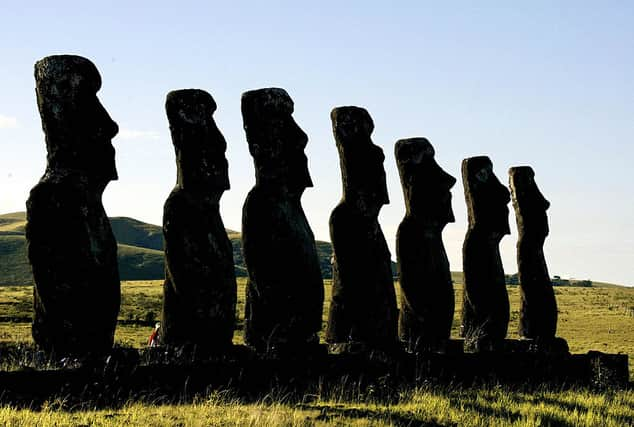Easter Island statues: stone Rapa Nui moai heads damaged by fire, how did they get there - do they have bodies


Carved around 500 years ago by a Polynesian tribe, the distinctive moai heads found on Chile’s Easter Island are some of the most famous artefacts in the world.
But now, a forest fire has damaged the mysterious statues on the island, with some of the charring deemed irreversible according to Chile’s cultural heritage undersecretary.
Advertisement
Hide AdAdvertisement
Hide AdThe blaze has damaged an unknown number of the stone-carved statues, of which there are nearly 1,000 found on Easter Island, according to Chile’s cultural heritage undersecretary.
Here is everything you need to know.
What happened?
The fire, which started on Monday (3 October), affected "nearly 60 hectares (148 acres)," according to Carolina Perez Dattari, a cultural heritage official.
It is thought to have been started on purpose, and centred around Easter Island’s Rano Raraku volcano, a Unesco World Heritage Site.
There are hundreds of moai in that area - nearly half of all the statues remain there - as well as the main quarry where the stone used to chisel the sculptures was first extracted hundreds of years ago.
Advertisement
Hide AdAdvertisement
Hide Ad"The damage caused by the fire can’t be undone,” the island’s Mayor Pedro Edmunds told local media.
The director of the Ma’u Henua community, which manages the national park, described the damage as "irreparable and with consequences beyond what your eyes can see.”
"The moai are totally charred," Ariki Tepano said on the park’s official social media channels. The park also said that a "shortage of volunteers" hampered officials’ capacity to contain and control the fire, which could have limited the damage done.
Easter Island is located over 2,000 miles off the coast of Chile. It is reliant on tourism and reopened to visitors only three months ago after being closed due to the Covid-19 pandemic.
Advertisement
Hide AdAdvertisement
Hide AdThe site of the blaze has now closed once again while a conservation team assesses the extent of the damage.
What are the moai?
Easter Island is home to around 1,000 of the large stone statues and carvings, the biggest of which weighs 74 tonnes and stands 10 metres tall.
The statues were carved by the indigenous Rapa Nui people between 1400 and 1650, and arranged in a ring around the island, facing inland.
They are best recognised for their deep-set eyes and large ears, but many also wear spectacular multi-tonne hats fashioned from a different type of rock from their main bodies.
Advertisement
Hide AdAdvertisement
Hide AdThey were Rapa Nui spiritual devotional figures, embodying the spirit of a significant ancestor - each was thought to be the person’s living incarnation.
The creation and transporting of the statues is regarded as an extraordinary artistic and physical effort. One incomplete sculpture would have stood roughly 21 metres tall and weighed between 145 and 165 tonnes had it been finished.
It is unknown how the moai were transported across the island, but academics agree that such a feat would almost certainly require vast amounts of human labour, ropes and potentially wooden sledges and/or rollers.
The most current theory suggests the sculptures were tethered with ropes from two sides and made to "walk" by tilting them from side to side while pulling forward, based on evidence in archaeological records. If that assumption is right, moving the moai would require 50 - 150 people.
Advertisement
Hide AdAdvertisement
Hide AdDespite the fact that moai are whole-body statues, they are commonly referred to as the "Easter Island heads", due in part to the disproportionate size of most moai heads, and in part to the fact that many of the famous photos of the statues were taken on the slopes of Rano Raraku, meaning many of those sculputes are buried to their shoulders.
Some of the "heads" at Rano Raraku have been unearthed and their bodies examined, and it was discovered that they had markings that had been protected from erosion.
Comment Guidelines
National World encourages reader discussion on our stories. User feedback, insights and back-and-forth exchanges add a rich layer of context to reporting. Please review our Community Guidelines before commenting.
